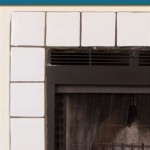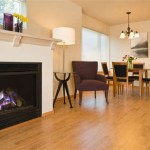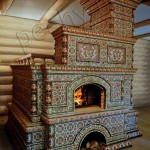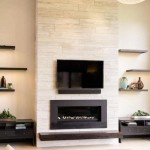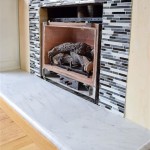Okay, here's an article on stove insert fireplaces, formatted as requested and adhering to the specified guidelines:
Stove Insert Fireplaces: Efficiency, Aesthetics, and Installation
Stove insert fireplaces represent an increasingly popular heating solution for homes across various climates. They offer a blend of aesthetic appeal and enhanced heating efficiency, effectively converting traditional open fireplaces into more productive and controllable heat sources. Understanding the functionality, benefits, and installation considerations of these inserts is crucial for homeowners considering this upgrade.
A stove insert is essentially a self-contained heating appliance designed to be installed directly into an existing masonry or factory-built fireplace opening. They typically feature a cast iron or steel firebox, surrounded by a decorative surround that partially or fully covers the original fireplace opening. By enclosing the fire and directing airflow, stove inserts significantly reduce heat loss up the chimney, a common problem with traditional open fireplaces.
Unlike open fireplaces, which primarily radiate heat directly outward, stove inserts are designed to maximize heat transfer through convection and radiation. Air is drawn into the insert, heated by the firebox, and naturally circulated back into the room or even ducted to other areas of the home. This controlled burning process also leads to more complete combustion, resulting in reduced emissions and greater fuel efficiency.
The availability of various fuel types provides homeowners with options tailored to their specific needs and resources. Wood-burning inserts remain a common choice, leveraging readily available and renewable resources in many regions. Gas inserts, fueled by natural gas or propane, offer convenience and ease of use, often with the ability to control the flame height and heat output with a thermostat. Pellet stove inserts utilize compressed wood pellets, providing a consistent and efficient burn with minimal ash production. Each fuel type presents distinct advantages and disadvantages regarding cost, maintenance, and environmental impact.
Enhanced Heating Efficiency and Cost Savings
One of the primary motivations for installing a stove insert is the significant improvement in heating efficiency compared to an open fireplace. Traditional fireplaces can be woefully inefficient, with a large percentage of the heat generated escaping up the chimney. This inefficiency often results in a net loss of heat, as the fireplace draws warm air from the house and expels it, forcing the central heating system to work harder and consume more energy.
Stove inserts, on the other hand, are designed to retain and circulate heat within the home. The enclosed firebox and controlled airflow minimize heat loss, allowing a greater proportion of the heat generated to be used for warming the living space. This enhanced efficiency directly translates into cost savings on heating bills, as homeowners can rely less on their primary heating systems, particularly during colder months. The exact amount of savings will vary depending on factors such as the size of the home, the climate, the type of fuel used, and the efficiency rating of the insert itself.
Furthermore, the improved combustion efficiency of stove inserts contributes to lower fuel consumption. This means that homeowners will need to purchase less wood, gas, or pellets to achieve the same level of heating comfort, further reducing heating costs. The reduction in fuel consumption also has environmental benefits, as it minimizes the emissions associated with burning wood or fossil fuels.
The controlled burning process within a stove insert also contributes to more consistent and predictable heating. Unlike the fluctuating heat output of an open fireplace, stove inserts provide a steady and reliable source of warmth, allowing homeowners to maintain a comfortable temperature throughout their homes. This consistent heating can be particularly beneficial in areas with harsh winters, where maintaining a stable temperature is crucial for comfort and safety.
Aesthetic Enhancement and Design Versatility
Beyond their functional benefits, stove inserts offer a significant aesthetic upgrade to any fireplace. While traditional open fireplaces can be visually appealing, they often lack the design versatility and modern features of stove inserts. Inserts come in a wide range of styles, finishes, and sizes, allowing homeowners to choose a model that complements their existing décor and personal preferences.
The design options available for stove inserts are extensive, ranging from classic and traditional styles to sleek and contemporary designs. Homeowners can select inserts with ornate cast iron detailing, clean lines, or modern glass fronts. The availability of different finishes, such as black, bronze, or porcelain enamel, further expands the design possibilities. The size of the insert can also be tailored to fit the existing fireplace opening, ensuring a seamless and integrated look.
Many stove inserts feature large viewing windows, allowing homeowners to enjoy the ambiance of a fire without the drawbacks of an open fireplace. These windows are typically made of high-temperature glass, providing a clear and unobstructed view of the flames. Some models also incorporate features like air wash systems, which help to keep the glass clean and clear by directing a stream of air across the surface.
In addition to their aesthetic appeal, stove inserts can also enhance the overall functionality of the fireplace. Many models include features such as blowers, which help to circulate heat more effectively throughout the room. Some inserts also have thermostatic controls, allowing homeowners to set a desired temperature and maintain a consistent level of comfort. These features add convenience and functionality to the fireplace, making it a more valuable and enjoyable heating source.
Installation Considerations and Safety Standards
Proper installation is crucial for the safe and efficient operation of a stove insert. It is highly recommended that installation be performed by a qualified professional who is experienced in working with fireplaces and heating appliances. Incorrect installation can lead to safety hazards, such as carbon monoxide poisoning or chimney fires, as well as reduced heating efficiency and potential damage to the fireplace or insert.
Before installing a stove insert, it is essential to inspect the existing fireplace and chimney to ensure that they are in good condition and meet the manufacturer's specifications. The chimney must be properly cleaned and inspected for cracks, obstructions, or other damage. It may also be necessary to install a new chimney liner to ensure that the insert is properly vented. The fireplace opening must be properly sized to accommodate the insert, and any necessary modifications should be made before installation begins.
Stove inserts must be installed in accordance with all applicable building codes and safety standards. These standards vary depending on the location and type of insert, but typically include requirements for clearances to combustible materials, chimney sizing, and ventilation. It is important to consult with local building officials and the insert manufacturer to ensure that the installation meets all applicable requirements.
Regular maintenance is also essential for the safe and efficient operation of a stove insert. This includes cleaning the chimney regularly to remove creosote buildup, inspecting the insert for any signs of damage or wear, and following the manufacturer's recommendations for fuel type and burning practices. Proper maintenance will help to ensure that the insert operates safely and efficiently for many years to come.
Carbon monoxide detectors must be installed and maintained in homes with stove inserts. Carbon monoxide is a colorless, odorless gas that can be produced by incomplete combustion. It is extremely dangerous and can be fatal. Carbon monoxide detectors will alert occupants if dangerous levels of carbon monoxide are present in the home, providing a crucial warning in the event of a malfunction or improper installation.
The selection and usage of appropriate fuel are critical for safety and efficiency. Using unseasoned wood in a wood-burning insert can lead to increased creosote buildup and reduced heating efficiency. Similarly, using the wrong type of fuel in a gas or pellet insert can damage the appliance and create safety hazards. Adhering to the manufacturer’s guidelines for fuel type and burning practices is crucial for safe and efficient operation.

Napoleon Epi3 Wood Fireplace Insert Inserts By Rockford Chimney

T25i Timberwolf Wood Fireplace Insert Hearth Stove Patio

Wood Burning Fireplace Inserts Insert Installation

Ventis Hei240 Wood Burning Insert Rockford Chimney

Wood Inserts We Love Fire

Why A Wood Burning Fireplace Insert Bethesda Md Service

What S Best A Fireplace Stove Or Insert We Love Fire

Ashford 25 Wood Insert Stove In Chestnut Enamel Capo Fireside

Wood Inserts Fireplace Xtrordinair Made In America

Rais 60 Insert Wood Fireplace For
Related Posts

